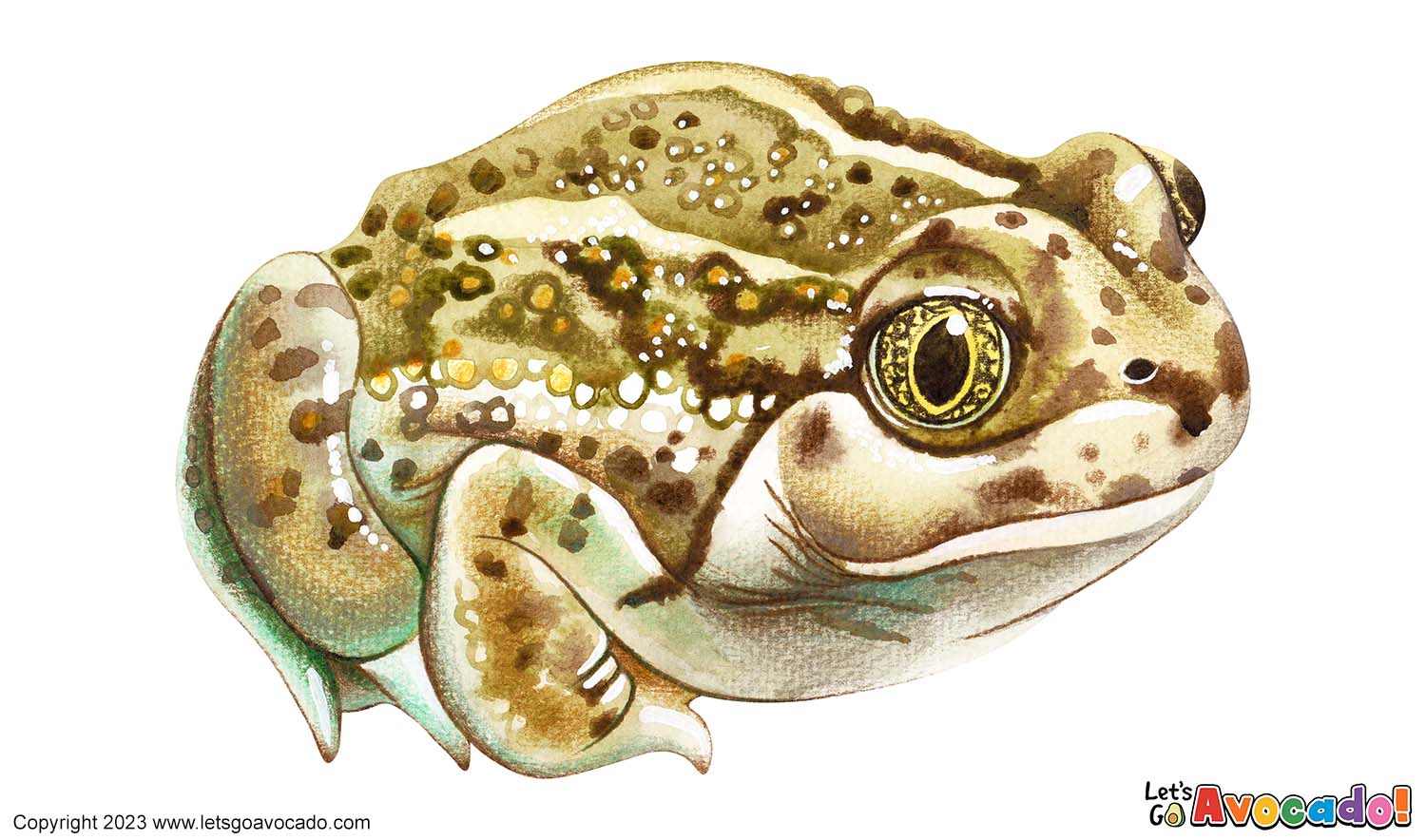

Great Basin Spadefoot
Western Spadefoot Frog, Intermountain Spadefoot Frog
Spea intermontana
This page may contain affiliate links.
Read our disclosure and privacy policy here.
The Great Basin Spadefoot Frog (Spea intermontana) is a unique amphibian native to the arid regions of the western United States and Canada. This fascinating frog has a compact body with a characteristic spade-like protrusion on its hind feet, which it uses for burrowing in sandy or loose soil. Its coloration varies from light gray to brown, providing excellent camouflage in its desert habitat. The Great Basin Spadefoot Frog has an incredible adaptationAn animal adaptation is a physical feature or a specific behavior that allows it to better survive in its environment. to survive in dry environments. It has the ability to aestivateAestivation is a survival strategy used by some animals to endure extreme heat and drought during hot summer months. It’s like a break during the hottest part of the year when these animals slow down their activities, conserve energy, and wait for more favorable conditions, such as cooler weather or rain, to resume their normal routines., a form of extended dormancyDormancy is a state of rest or inactivity that some living things enter to survive challenging conditions. It’s like hitting a pause button on their usual activities. During dormancy, these organisms slow down their processes, such as growth and metabolism, until conditions become more favorable for them to become active again., during periods of droughtDrought is when a place doesn’t get enough rain for a really long time. It’s like having a super dry and parched period where there’s not enough water for plants, animals, or people. Droughts can be tough because they can lead to water shortages, affect farming, and impact the environment, making it harder for everything to thrive.. This allows it to conserve water and survive in harsh conditions. During wet periods, it emerges from its burrow to breed in temporary ponds, where it lays its eggs. The tadpoles develop rapidly and metamorphose into froglets within a few weeks. Despite facing habitat loss and degradation, the Great Basin Spadefoot Frog plays a crucial role in its ecosystemAn ecosystem is a community of living organisms, like insects and birds, and non-living components, like water and rocks, that interact with each other in a specific area. Learn More by controlling insect populations and serving as prey for larger animals.
Great Basin Spadefoot

There’s a lot to explore right where we are, in our own neighborhoods and backyards! Join us while we get off the couch and explore the everyday wonders of nature, science, space, engineering, art, and anything else we stumble upon during on our adventures.







